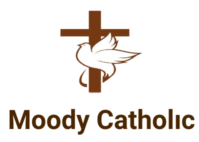The Evolution of Papal Authority in the Catholic Church
A Historical Journey
Papal authority in the Catholic Church has undergone significant transformations over the course of two millennia.
From its humble beginnings to its present-day form, the development of papal authority is an intriguing narrative that reflects the changing dynamics of religious leadership and the wider socio-political environment.
This article aims to provide a concise overview of the historical milestones in the evolution of papal authority.
This blog post contains affiliate links. When you click on a link on this page and make a purchase I may earn a small commission, at no additional cost to you. Thank you for your support.
The Early Church and the Emergence of the Papacy
At the dawn of Christianity, the organizational structure of the Church was relatively decentralized. Bishops held authority in their respective regions, with the Bishop of Rome being recognized as a figure of significant influence due to the city’s prominence.
The seeds of papal authority were sown during this period as the Bishop of Rome gradually gained more respect and his opinion was sought on important matters.
The Pontificate of Gregory the Great
The papacy took a giant leap forward during the pontificate of Pope Gregory I (590-604). He not only strengthened the authority of the Bishop of Rome but also assumed a prominent role in consolidating the Church’s power across Europe.
His theological teachings and practical reforms shaped the concept of papal supremacy for centuries to come.
Investiture Controversy and the Rise of the Papal States
The Investiture Controversy of the 11th and 12th centuries marked a critical phase in the development of papal authority. It centered around the competing claims of popes and secular rulers over the appointment of bishops and other Church positions.
Through this struggle, the papacy asserted its independence from secular control and established the Papal States, a territory directly governed by the Pope.
The First Vatican Council
In the 19th century, the First Vatican Council addressed the issue of papal authority in response to the challenges posed by modernity.
It declared the doctrine of papal infallibility, asserting that under specific conditions the Pope is preserved from error when defining matters of faith and morals. This proclamation solidified the Pope’s role as the ultimate authority in matters of doctrine within the Church.
Vatican II and the Modern Papacy
The Second Vatican Council (1962-1965) marked a significant milestone in the evolution of papal authority in the modern era. Emphasizing collegiality, the council highlighted the shared responsibility of bishops and the Pope in guiding the Church.
This shift in focus promoted collaboration and dialogue within the hierarchical structure of the Church while reaffirming the Pope’s central position.
Conclusion
The historical development of papal authority in the Catholic Church is a testament to the ever-changing nature of religious institutions. From its early origins to the present day, the papacy has evolved and adapted, responding to the challenges and opportunities presented by different eras.
Understanding this evolution helps shed light on the complex dynamics between religious authority, tradition, and the wider context of human history.
By recounting the milestones outlined in this article, we hope to have provided a glimpse into the fascinating and multifaceted journey of the papacy, as it continues to shape and guide the Catholic Church in the 21st century.
Looking for unique Catholic gifts? Check out our gift guide!
